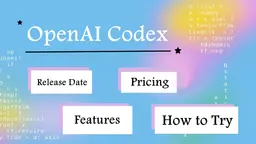PDF to LaTeX Введение
PDF to LaTeX — это инструмент преобразования, управляемый ИИ, который преобразует PDF-документы в редактируемый код разметки LaTeX, сохраняя целостность документа и форматирование.
Посмотреть большеЧто такое PDF to LaTeX
PDF to LaTeX — это специализированная служба преобразования, которая мостит разрыв между PDF-документами и языком разметки LaTeX. Она использует передовую многомодальную технологию LLM (Large Language Model) для точного преобразования содержимого PDF в код LaTeX, что делает ее особенно ценной для академических, научных и технических документов. Этот инструмент разработан для обработки сложного форматирования, математических уравнений, таблиц и других специализированных элементов, при этом обеспечивая, чтобы преобразованный код LaTeX воспроизводил внешний вид оригинального PDF.
Как работает PDF to LaTeX?
Процесс преобразования работает в два этапа: сначала PDF преобразуется в изображения, затем эти изображения обрабатываются ИИ-моделью, обученной на обширных наборах данных PDF и соответствующего кода LaTeX. Система анализирует структуру, форматирование и содержимое документа, чтобы сгенерировать соответствующий код LaTeX. Хотя инструмент автоматически обрабатывает преобразование текста и форматирования, он создает ссылки на изображения, а не копирует их напрямую, что требует от пользователей ручного управления файлами изображений. Сервис поддерживает различные типы документов и может обрабатывать несколько страниц, хотя сложные документы могут потребовать некоторых ручных корректировок для достижения оптимальных результатов.
Преимущества PDF to LaTeX
Использование PDF to LaTeX предлагает несколько ключевых преимуществ: это экономит значительное количество времени и усилий по сравнению с ручным преобразованием или перепечаткой; оно сохраняет целостность документа и точность форматирования; оно позволяет легко редактировать и обновлять преобразованные документы; и оно предоставляет гибкость в форматах вывода. Этот инструмент особенно полезен для исследователей, академиков и профессионалов, которым необходимо модифицировать существующие PDF-документы или соответствовать требованиям подачи в LaTeX. Кроме того, он поддерживает совместную работу, позволяя командам преобразовывать и редактировать документы в формате LaTeX, при этом обеспечивая конфиденциальность и безопасность данных благодаря своей политике неприменения данных для обучения и подходу к обработке в памяти.
Тенденции ежемесячного трафика PDF to LaTeX
PDF to LaTeX получил 667.0 посещений за прошлый месяц, демонстрируя Значительное снижение на уровне -63.3%. Согласно нашему анализу, эта тенденция соответствует типичной рыночной динамике в секторе инструментов искусственного интеллекта.
Посмотреть историю трафика
Популярные статьи

Google Veo 3: Первый AI-видеогенератор с поддержкой аудио "из коробки"
May 28, 2025

Топ-5 бесплатных AI NSFW чат-ботов-подружек, которые вам стоит попробовать — Реальный обзор от AIPURE
May 27, 2025

SweetAI Chat против CrushOn.AI: финальная битва NSFW AI Girlfriend в 2025 году
May 27, 2025

OpenAI Codex: дата выхода, цены, функции и как попробовать ведущего AI Coding Agent
May 19, 2025
Показать больше







